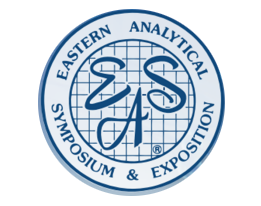
Colespec Solutions
Dr. Sam Coleman received a BS in Agriculture from the University of Tennessee at Martin (1969) and MS (1971) and PhD (1972) in Animal Nutrition at the University of Tennessee at Knoxville. He has a research career of over 40 years that included three years with the University of Florida, and 37 yrs with the USDA-ARS at two locations: the Grazinglands Research Laboratory in El Reno, OK and the Subtropical Agricultural Research Station in Brooksville, FL. He served as Research Leader for 16 of the years with USDA, and is currently owner of Colespec Solutions. He continues research and training activity with ARS and Gansu University in China.
From graduate training forward, he held a keen interest in methodology for ascertaining controlling factors that govern intake of animals, particularly herbivores. Thus, he was fascinated with new methods and technologies that might help in this area. He was introduced to near-infrared reflectance (NIR) technology as a potential for feed and forage evaluation in the early 1970s by Dr. John Moore while an assistant professor at the University of Florida. At the GRL in El Reno, he became involved with a consortium charged by the USDA to evaluate NIR as a rapid method for feed and forage analysis. While the consortium was largely interested in quick analysis of feeds and forages for routine laboratory chemistry used in feedstuff trade, Dr. Coleman always thought that the methodology could do more. He pioneered work to estimate botanical composition of forage mixtures and in the direct prediction of intake and in vivo digestibility. This work was more difficult because the component of interest was not really a chemical entity, but only an associated attribute. Furthermore, especially with intake and diet selectivity, the animal was a dominant contributor to the variation in reference data, and the reference data was difficult and expensive to obtain. During a sabbatical with Dr. Ian Murray at the Scottish Agricultural College in Aberdeen, Scotland he compared paired spectra from feeds and feces with the goal of deciphering spectral regions more or less resistant to degradation during the digestion process. He further developed a fecal index to directly predict diet digestibility and intake from spectra of feces. More recently, with Dr. Pat Starks at the GRL, he worked on methods to directly predict herbage characteristics in the field using near-by remote sensing and testing portable instruments for suitability.
Dr. Coleman has authored over 220 publications, has made over 40 invited presentations or book chapters, and has been principal or co-investigator on grants totaling over $5M. As an adjunct faculty at two universities, he has been involved in training 11 M.S. and Ph.D. students. He is an active member of the American Society of Animal Science (ASAS), and past member of the American Society of Agronomy, American Forage and Grassland Council, British Grassland Society, and Society for Range Management, has served as on various committees, and served in all officer positions of the Southern Pastures and Forage Crop Improvement Conference. With Dr. Hugh Dove of Canberra, Australia he was co-convener of Satellite Conference at International Symposium for the Nutrition of Herbivores in 1999. He has served on the editorial boards for both the Journal of Animal Science and the Small Ruminant Research. He was awarded the Distinguished Service Award for the southern section of ASAS.
